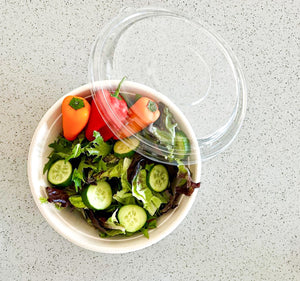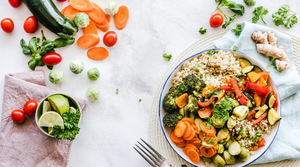Subscribe to our newsletter for 10% off your first order!
What's the Beef?
What’s the beef?
Feeding a hotter hungrier world!
A Hotter World
Intergovernmental Panel on Climate Change said:
- Artic snow cover has shrunk by 1million square miles since 1967
- Between 2006 and 2015 , 650 billion tonnes of ice has been lost from the world’s glaciers
- Sea level has risen by 3 to 6 mm a year since the rate of the last century
- Sea level will rise 30 to 60 cm by 2100 even if greenhouse gases are reduced and by 60 to 110cm if green house gases continue to rise.
- More than one billion people will be affected by rising sea level , water shortage and food insecurity by 2050
We have witnessed unprecedented weather conditions, such as the hottest July this year, caused by our actions and the resulting global warming. The 2015 Paris agreement endeavour to reduce carbon emissions by 50% by 2030 in order to mitigate the 1.5 to 2 degree rise in global temp, and to zero by 2050.
A Hungrier World
There are currently seven and half billion people on the planet and by 2050 there will be an extra two billion people to feed! Aside from cutting carbon emissions from cars, factories and power plants, one other major piece of the whole pie is our food supply and consumption. We see a doubling of the world population in less than 50 years but with growing affluence, a tripling of meat consumption. 10’s of billions of animals are currently slaughtered for consumption.
Our diet is among lifestyle changes urgently needed if developed nations are to have a hope of meeting targets for reduced carbon emissions and a reduction to global temperatures.
So what’s the beef?
1. The agricultural sector is responsible for almost a quarter of the total global emissions of greenhouse gases and of this amount livestock is responsible for a massive 18% (Tidwell 2009). The main culprit is the ‘output’ in the form of methane and nitrous oxide from cows and sheep. Both these ‘output’ are more potent than CO2 at trapping heat. According to Mc Michael, to reverse this process, we need to reduce our global meat consumption to an average of 90g per person per day. (McMichael, A.J., 2007).
2. It takes more resources to produce meat protein than it does to produce vegetable protein:
- land - 6-17 times more land needed to produce meat protein compared to vegetable protein (Harmon & Gerald 2007);
- fossil fuel - 20 to 80 calories to produce 1 calorie of animal protein compared to only 2 calories to produce 1 calorie of plant food. In fact producing 2 pounds of beef requires the same amount of energy that it takes to light a 100-watt bulb for approximately 20 days (Geagan 2009);
- water – five times more water to grow grains for animal feed than to grow fruits and vegetables (Geagan 2009).
3. Eating caged livestock that may be diseased distressed and fed with artificially enriched feed containing hormones and antibiotic can make one unhealthy too.
4. Ruminants and especially beef are climatically costly. When we talk about a meat diet being not eco-friendly, we often are referring to beef and rightly so. Much focus on the impact of livestock on climate change has pointed the finger to cattle. Anyway you look at it, beef has the highest environmental cost, be it in its ‘output’ which traps the greenhouse gas, its fertility or feed conversion, compared to pork and chicken. A cow has only one calf per year which translates into carbon cost of every cow for beef includes the cost of maintain an adult for a year compared to the two litters per year from pigs with 10 or more pigs per litter. It takes 10 pounds of feed to make one pound of beef, but only 3.5 pound for pork and two pounds for chicken.
5. When we measure carbon footprints in terms of weight, the ruminants are indeed the worst offenders with plants looking like angels. According to the 2011 Meat Eater Guide Report by the Environmental Working Group, lamb generates 39 kilograms of carbon dioxide for each kilogram of meat, beef – 27, pork -12, turkey -11, chicken -7 and plant from potatoes- 3 to lentils- 1.
Let’s help to mitigate global warming by making changes to our diet. We need not do it drastically, but every small change by all of us will make a significant impact.
At Element Packaging we do our bit by providing food packaging that uses materials that have minimum carbon footprint and with the planet in mind. Sustainability is in our DNA. This is why we do what we do. Element is a global manufacturer that focuses on home compostable, compostable and biodegradable tableware and packaging for the food service industry.



